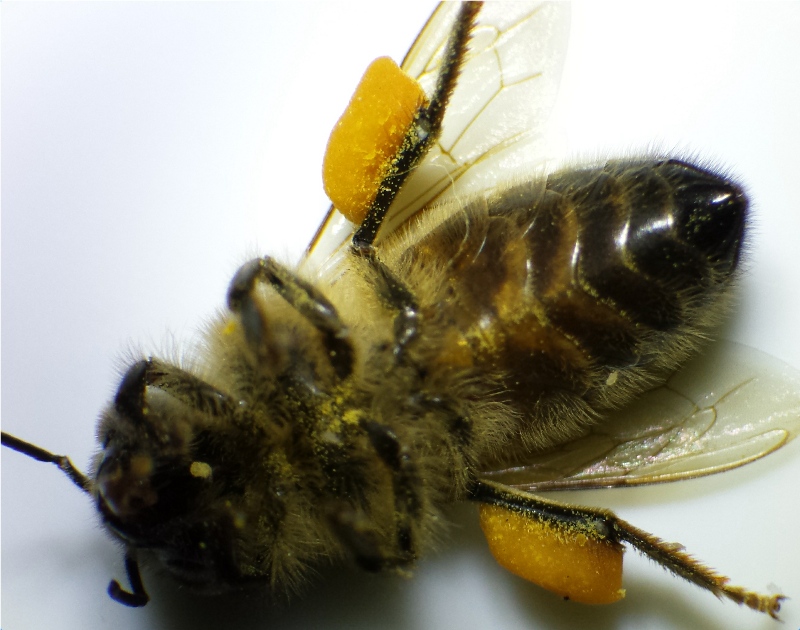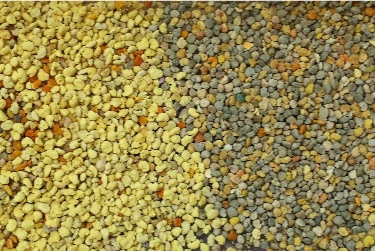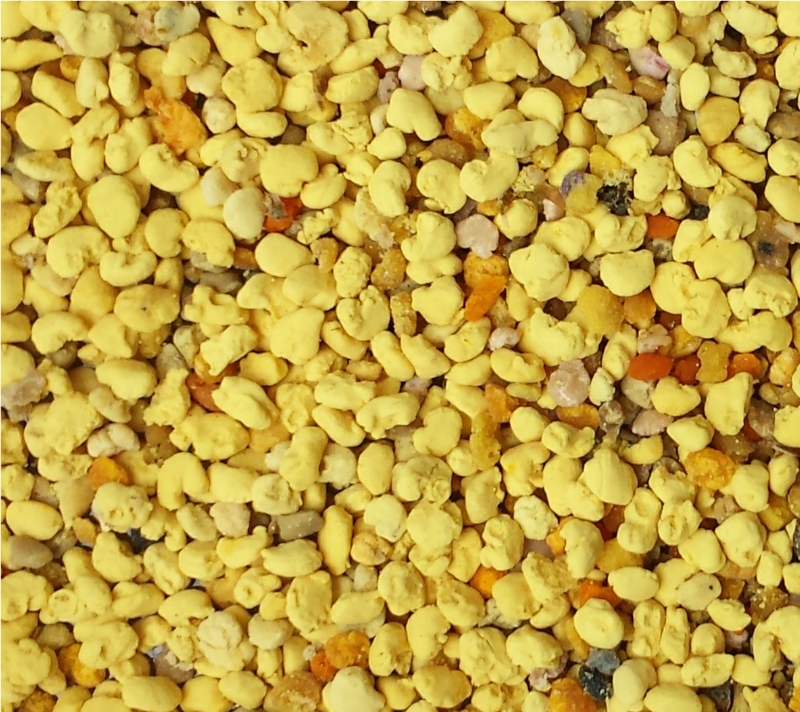Pollen Load
|
Inspecting the pollen loads that the bees are bringing back to the hive can give additional information on the hives health and foraging habits. The bees collect pollen from the flowers they visit, they then carry the pollen back to the hive in their 'pollen baskets' located on their back legs. Each of the two back legs carry a 'pollen load'. |
 |
|
As a beekeeper, I can collect the pollen from the bees by using a 'pollen trap'. This is a simple device consisting of a small sheet of plastic with a number of holes drilled through which the bees crawl through to return into their hive. Crawling through the holes the pollen is dislodged from the back legs, the pollen then falls through a grid into a collecting container located below. The grid stops the bees retrieving the pollen. This year (2013) I collected pollen on two days during July and August. This resulted in approximately 45 g of pollen in total. The pollen can be seen in the picture, the darker is from July, and the lighter (more yellow) is from August. |
 |
|
The pollen can be identified from its colour and time of year that the bees have collected it. There are a couple of recommended publications that can be used. Each gives a colour chart for the pollen along with the pollen source i.e. plant/flower name. The pollen can be further studied under the microscope. Confirmation of the identification can be carried by matching the pollen loads characteristics, such as shape and size while viewing at x400. |
 |
|
Pollen has a small number of uses, not only as a supplement for the bees during a time of naturally low pollen times, but also as a food supplement for the beekeeper. Pollen contains a good variety of vitamins etc. Pollen can also be used as a source of protein and vitamins for other small animals such as lizards. Honey also contains pollen. The pollen can be removed from the honey by dilution and settling or more quickly by using a centrifuge. The pollen can then be studied under the microscope, again using its size shape the identification of the pollen loads can be determined. |
Books
Pollen Identification Cards, by WDJ Kirk.
A colour guide to pollen loads of the honey bee, by William Kirk.
Honey identification, by Rex Sawyer.
Pollen, its collection and Preparation for the Microscope, by John
White.
